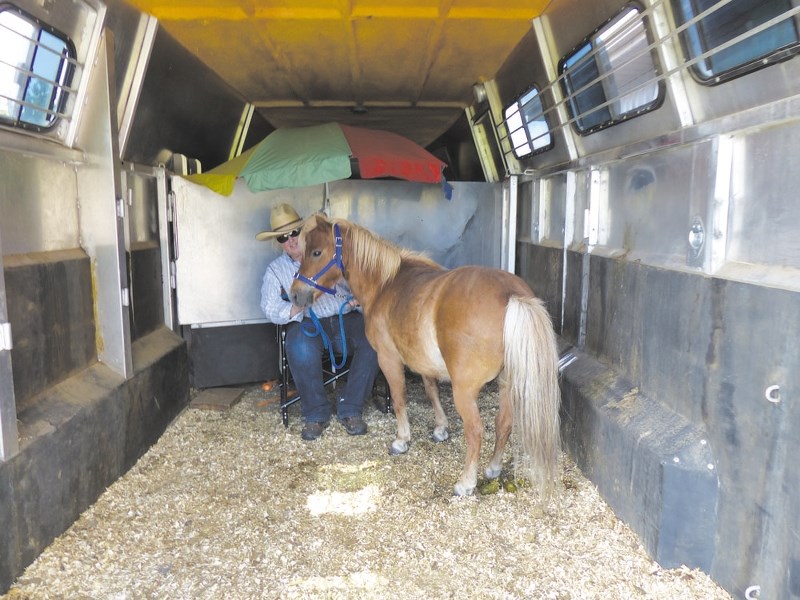Finally, we can start travelling with our horses and enjoying the mountain trails (at least those not impacted by the flooding).
Something you may want to consider before you load your horse – is your trailer the right size for your horse?
There are a lot of opinions out there on appropriate trailer size when hauling horses. There are many factors to consider, including height, stall configuration, width, length, size of your horse and number of horses to fit in the trailer at one time. You may have a personal preference, but you must consider the needs of your horse first.
The height of your horse will dictate the inside height of your trailer. A general, regular type trailer is at least six feet wide by seven feet high inside with a stall length of nine feet. This is suitable for horses up to 16HH, but anything over that will require more room. The bigger ‘warmblood’ trailers are in the neighborhood of seven feet, six inches inside with headroom and are wider. Stalls need to be longer, which could be accommodated by changing the angle of the stalls.
Horses over 18HH will require at least seven foot, 10 inches of inside height, and draft will need at least eight feet inside height with a stall length of at least 10 feet.
The width of the stall is very important – horses need to be able to have enough room to balance themselves as well as be able to stretch out to relieve themselves. If you have ever watched a horse urinate (don’t shake your head – if you have horses, you have watched!), you would notice that they stretch out. If they can’t stretch in the trailer, they will sometimes ‘hold it’ until they can stretch and this will be very uncomfortable for the horse.
Also, some horses get quite agitated if they are touching the dividers – they need to be able to move from side to side. The width can’t be wide enough for the horse to partially turn and get jammed in, but there should be clearance on either side — Kevan Garecki, author of Tow Like a Pro, suggests three to six inches on either side.
There are a lot of stall configurations depending upon the size of your trailer – you can have straightforward, reverse straight, reverse angle, forward angle or box stall.
For my horses, my trailer can be configured in different styles, so I use reverse angle for the full size horses and box stall for the miniature horses.
Whatever you choose, ensure your horse is comfortable and has room to stretch and raise or lower his head comfortably when he wants to.




